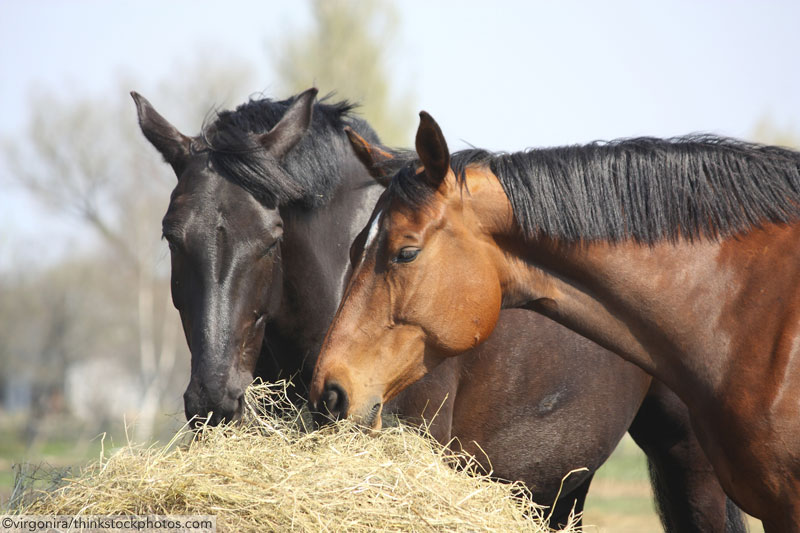When communicating with your vet, you should consider the following checklist to relay any history and information that might shed light on your horse’s respiratory problem.
- Have there been any indications of respiratory illness in other horses in the barn, or
has your horse previously exhibited any respiratory problems? - Has the hay recently come from a new source?
- If you stick your nose in the hay, does it smell moldy or musty?
- Is the hay dusty when you break open a bale?
- Does the hay contain alfalfa?
- Is your horse housed in a barn for part of the day or night?
- Is hay stored above the stalls?
- Are bales thrown at feeding time, creating a lot of dust in the air?
- Is the barn well ventilated, or closed up tightly?
- Does your horse eat from an elevated feeder, or does he eat off the ground?

Many of these questions might spark a few telling recollections. If hay has come from a new source, it might be drier and dustier than previously fed bales. As you break open a new bale, does dust fly from the hay, making a thick mist of particles in the air? Does the smell of the hay have any faint odor of must or mold? If hay is lobbed from overhead or into the feeders, can you see dust and particles spewed into the air? Does your horse burrow his head into the hay placed in an overhead hay feeder? All these environmental pollutants are inhaled into your horse’s airways potentially creating an allergic response.
Back to Heaves in Horses >>







I have young horse that breathe funny, and was looking for some ideas of why and what I can do.